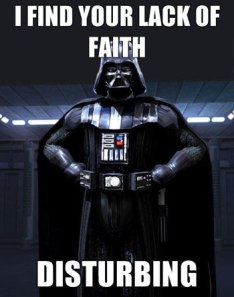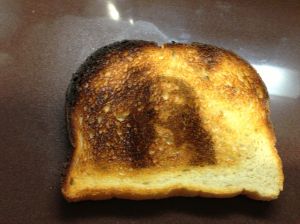It’s not quite May the Fourth yet, but since we’re giving away some sweet Star Wars™ First Edition STREET by 50 On-Ear Headphones… we’ve got some fun facts from a galaxy far, far away. Don’t worry – none of them have anything to do with Jar Jar.
A Schizophrenic Galactic Empire?
 Did you know Darth Vader was played by a total of six actors on screen? If not, I find your lack of knowledge disturbing.
Did you know Darth Vader was played by a total of six actors on screen? If not, I find your lack of knowledge disturbing.
In the original three films, bodybuilder David Prowse played Darth Vader, while stunt performer Bob Anderson did the lightsaber action scenes.
Actor James Earl Jones provided the famous voice. Sebastian Shaw played Darth Vader unmasked in Return of the Jedi. In the more recent films, Jake Lloyd portrayed young Anakin Skywalker in The Phantom Menace, followed by Hayden Christensen in Attack of the Clones and Revenge of the Sith. So, which one is Luke’s father?
Source: http://starwars.wikia.com/wiki/Darth_Vader
Win a pair of the NEW Star Wars™ Galactic Empire headphones from SMS Audio by becoming an Uber VIP through our Twitter contest (click the Twitter link to enter):
50 Cent has been a fan of Star Wars™ his whole life. So, they’ve teamed up to do this: https://t.co/hoUG9Ak6l7
— UberFacts (@UberFacts) April 21, 2014
Rebel Alliance and an Alias
Luke Skywalker went through multiple changes in George Lucas’s early drafts of the script. Originally intending Luke to be female, Lucas also toyed with portraying him as a grizzled old general.
In fact, Luke’s last name was almost “Starkiller” before a last minute change. Which is good, because “Starkiller” just doesn’t seem to suit our protagonist.
Source: http://starwars.wikia.com/wiki/Luke_Skywalker
WIN Star Wars™ Rebel Alliance headphones by SMS Audio! (click link in Tweet below to enter)
Star Wars™ has the most successful movie-related toy line ever sold! Win the newest addition HERE: https://t.co/YaMIZbrXQ6
— UberFacts (@UberFacts) April 22, 2014
The Truth About the Elusive Boba Fett
Although the mysterious bounty hunter gained cult status and was ranked #79 in Empire Magazine’s 100 Greatest Movie Characters, Boba Fett only has four lines in the Star Wars films.
Catch all of the lines here, in less than 30 seconds:
George Lucas even admitted that had he known the Mandalorian would become so popular, he would have given him a more dignified death scene. Oh well, Boba Fett’s still a badass.
Source: http://www.imdb.com/title/tt0086190/trivia?ref_=tt_ql_2
WIN free Star Wars™ Boba Fett headphones by SMS Audio! (click link in Tweet below to enter)
The Voice of Yoda was provided by Frank Oz, who is also the voice of Miss Piggy. Hear it for yourself with these… https://t.co/yM6k616iYF
— UberFacts (@UberFacts) April 24, 2014
Seriously, Stormtroopers…
 Though notoriously bad at aiming, Stormtroopers look freakin’ cool. So much so that there’s an international fan-based organization dedicated to Stormtrooper costumes called the 501st Legion. In its 17th year and 6,500 members strong, the group got an homage in Revenge of the Sith; the legion of blue clone troopers led by Darth Vader into the Jedi Temple was designated the 501st. It pays to be a fan.
Though notoriously bad at aiming, Stormtroopers look freakin’ cool. So much so that there’s an international fan-based organization dedicated to Stormtrooper costumes called the 501st Legion. In its 17th year and 6,500 members strong, the group got an homage in Revenge of the Sith; the legion of blue clone troopers led by Darth Vader into the Jedi Temple was designated the 501st. It pays to be a fan.
Source: http://starwars.wikia.com/wiki/501st_Legion
WIN free Star Wars™ Stormtrooper™ headphones by SMS Audio! (click link in Tweet below to enter)
Infamous bounty hunter, Boba Fett only has four lines in the Star Wars™ films. Hear them through these… https://t.co/tdUmW4gjcM
— UberFacts (@UberFacts) April 24, 2014
OR get your own pair of limited-edition Star Wars™ headphones by SMS Audio when you pre-order here >>
How about you? What’s the craziest Star Wars™ trivia you’ve ever heard?




